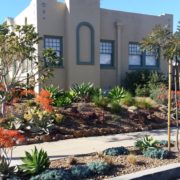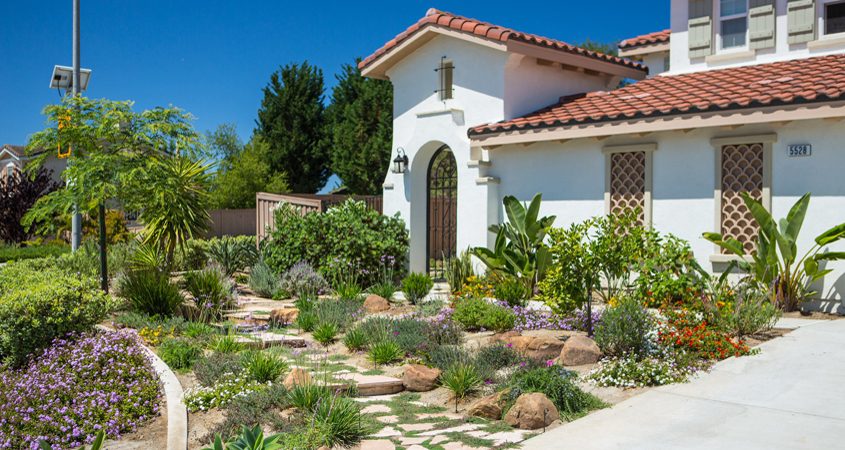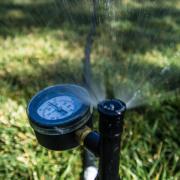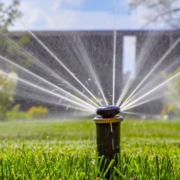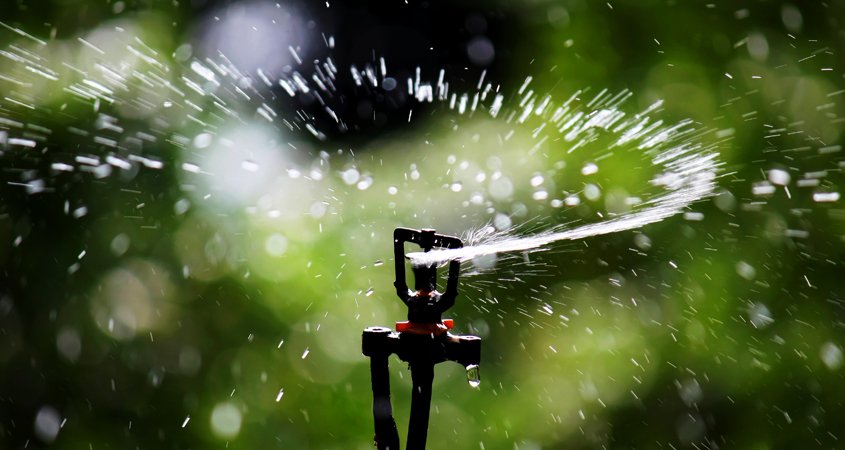Otay Water District Opens 2023 Landscape Makeover Contest
The Otay Water District has launched its annual WaterSmart Landscape Contest as part of a continuing effort to encourage water conservation. Outdoor watering accounts for more than half of residential water use. The resident judged to have the most attractive, drought-toleranat garden receives a nursery gift card, among other prizes, and the title “Best in District.” The deadline to enter is Friday, May 12.
“This contest recognizes the outdoor conservation efforts our residential customers have made during a time when it matters most,” said Otay Water District Board President Mark Robak. “Previous winners of this program have proven that it is possible to create low-water and low-maintenance landscapes with curb appeal.”
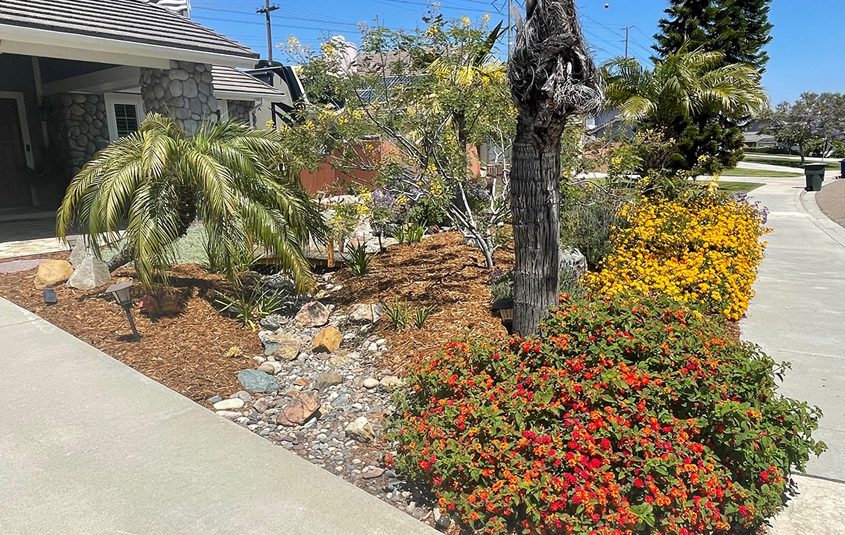
The Feibers used beautiful low-water use plants to replace more than 2,000 square feet of turf. Photo: Otay Water District
To participate, residents must fill out an application and submit before and after photos of their landscape, a plant list, and a description of their landscape’s transformation. Nominations are also welcome. Front, back, and side yards are eligible.
Recent winners include the transformation of a gopher-ridden lawn at an El Cajon home into an outdoor room design that is wheelchair accessible; a La Mesa makeover incorporating creative elements including a hand-built waterfall made from an old truck ladder rack and other solid materials otherwise destined to become trash in a landfill; and a drought tolerant Chula Vista landscape which beautifies an entire neighborhood with native habitat.
Contest showcases residential water-saving landscape projects
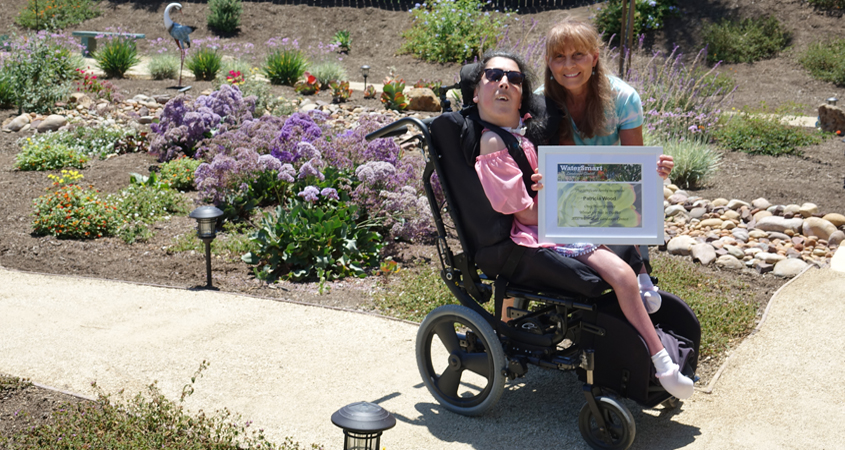
The beautiful, wheelchair accessible garden inspired by Patricia Wood’s daughter Kimberly is the 2020 Otay Water District Landscape Contest winner. Photo: Otay Water District
The 2023 regional WaterSmart Landscape Makeover competition seeks the best in landscaping makeover projects from 12 participating San Diego County water agencies. The annual competition is intended to showcase residential water-saving landscaping projects. Winning examples help inform and inspire other homeowners to consider replacing their water-guzzling grass yards.
“We’re encouraged by the enthusiastic participation by San Diego County homeowners who are moving away from lawn-intensive landscaping as the default choice,” said Joni German, Water Resources Specialist with the San Diego County Water Authority. “Homeowners are creating lush, colorful, thriving landscapes which are water-efficient and beautiful at the same time.”
Twelve participating agencies in San Diego County
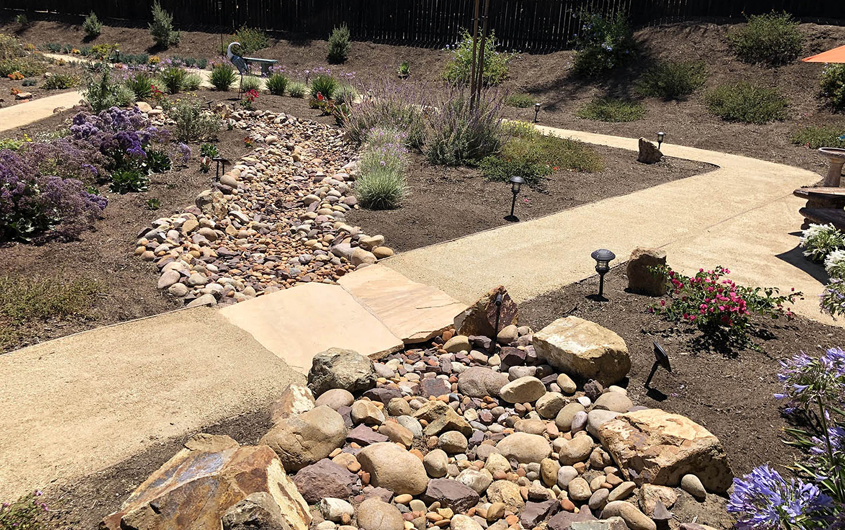
Patricia Wood’s landscape design has broad paths to accomodate a wheelchair. Photo: Otay Water DIstrict
Along with the Otay Water District, participating agencies in 2023 include: California American Water, the cities of Escondido and Oceanside, Helix Water District, Olivenhain Municipal Water District, Padre Dam Municipal Water District, Rincon Del Diablo Water District, San Dieguito Water District, Sweetwater Authority, Vallecitos Water District, and the Vista Irrigation District.
Each agency winner receives a $250 gift certificate and public recognition for their efforts. Homeowners may also be eligible for grass removal rebates and additional incentives.
This year’s contest deadline for all participating agencies is Friday, May 12. Homeowners may submit their entry online through their participating agency.
(Editor’s Note: The Otay Water District, the cities of Escondido and Oceanside, Helix Water District, Olivenhain Municipal Water District, Padre Dam Municipal Water District, Rincon Del Diablo Water District, San Dieguito Water District, Sweetwater Authority, Vallecitos Water District, and the Vista Irrigation District are 11 of the San Diego County Water Authority’s 24 member agencies that deliver water across the San Diego region.)







